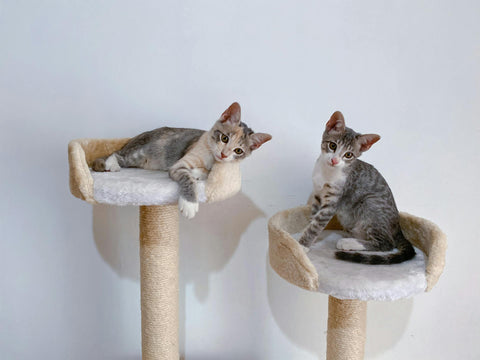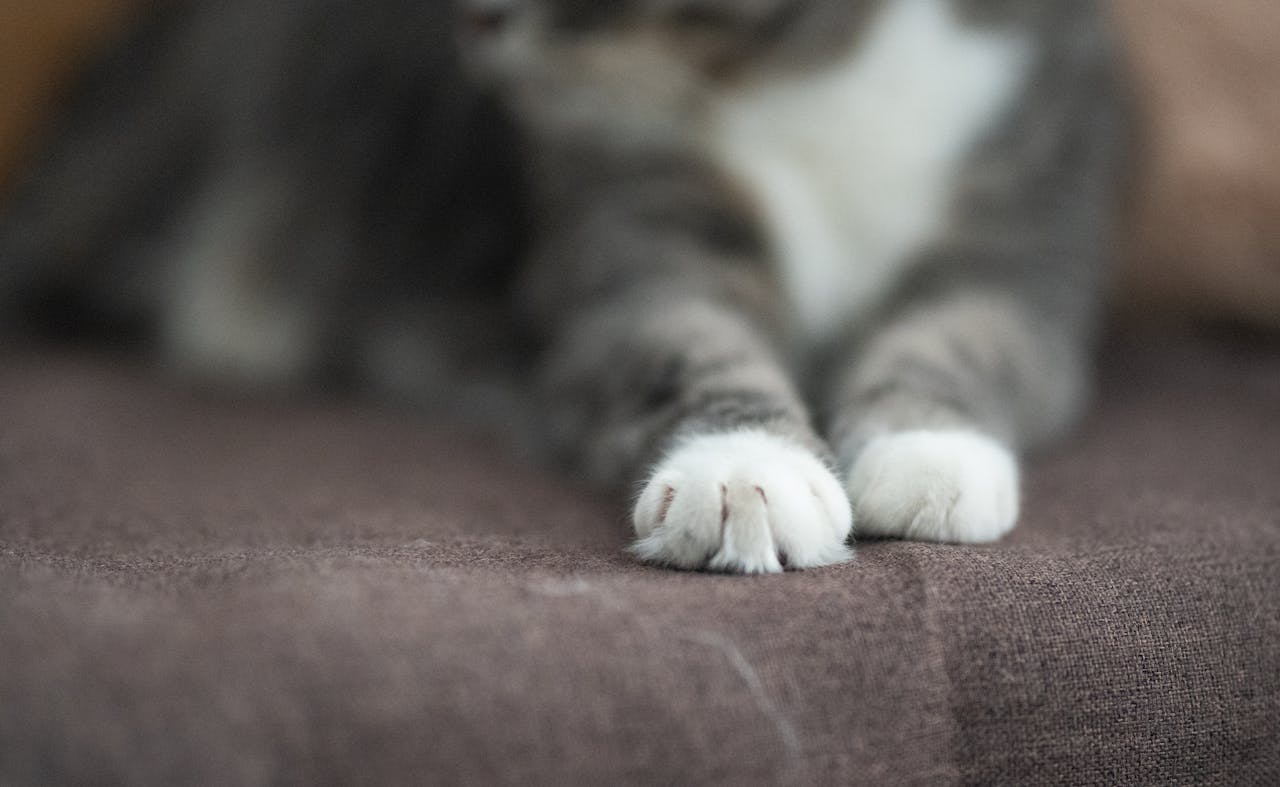Is your cat turning your sofa into a scratching post? Or maybe you feel like a pin cushion during your feline’s friskier moments. You might have thought about declawing as a way to solve your cat claw woes, but is it safe for your cat?
How Do You Declaw a Cat?
Some pet parents opt to declaw their cats to limit injuries from scratches or to prevent damage to furniture and other belongings. Many vets view the practice as unfavorable, and the American Veterinary Medical Association (AVMA) discourages declawing cats. The organization’s recent policy revision makes its overall position clear but states that vets make the final decision based on individual cases.
The process of declawing involves removing the cat’s distal phalanx from their paw, resulting in no more claws. The procedure is elective and typically uses one of three methods, including scalpel, laser, or guillotine.
The person performing the partial amputation removes the distal phalanx bone of each of the cat’s toes. After removal, they suture the toes closed. These bones are where the claws attach, therefore, removing them prevents the claws from growing back.
What Are the Cons of Cat Declawing?
As more research looks at the overall process of declawing and its potential long-term issues, more people view it as a negative procedure. The Journal of Feline Medicine and Surgery features a study on the adverse behavior of declawed cats. It suggests that declawing your cat can lead to problems, including back pain and unwanted behavior.
After getting declawed, cats deal with pain during the recovery process. However, the cons of getting your cat declawed go beyond the expected postoperative phase.
1. Over-Grooming
The pain cats experience from the declawing procedure could contribute to over-grooming. This is because sometimes cats self-soothe by licking and grooming themselves. Therefore, when they feel more stressed, they’ll ramp up these habits. Over-grooming can lead to irritated skin, broken fur, hot spots, more hairballs, and other problems.
2. Back Pain
Back pain is another negative result of declawing. The theory behind why declawing cats leads to back pain is that cats adjust their gait post-procedure.
They change their walk to compensate for the pain they feel in their toes during the recovery process. This modified stride forces cats to take on a position that ends up causing discomfort in other areas.
3. Bone Spurs
Some cats develop bone spurs from tiny pieces of bones left behind post-surgery. These bony bits may or may not cause pain, depending on their size and precise location on the paw. But if your cat seems to be having issues, a vet will need to perform X-rays to identify bone spurs as the culprit.
4. Aggression
If your cat is in pain after having their claws removed, then it’s possible it can raise their aggression level. Pain potentially elevates a cat’s fight-or-flight response. Also, since they no longer have their claws as a means of protection, it could make them more likely to bite.
5. Not Using the Litter Box
If your cat is dealing with painful toes, they may no longer want to deal with climbing in and out of a litter box or digging through litter. If your cat doesn’t use the litter box, you may notice them messing outside of the box on the litter mat. Your cat may even start having accidents in other parts of the house if they don’t feel like walking from point A to point B when duty calls.
6. Lose a Line of Defense
A cat’s claws are one of the ways they defend themselves. They use their claws to scratch and drive away a potential enemy, and protect themselves in a fight. Also, although cats without claws can still climb, claws help them climb much faster, allowing them to seek higher ground if they're being chased.
Even if your cat spends all of their time inside, what would happen if they were to accidentally get outside? They would be missing a vital line of defense.

Alternatives to Declawing Your Cat
Now that you’ve hopefully decided against declawing your cat as a way to fix certain problems, what can you do? Luckily, there are alternatives to declawing that can keep your furniture and your skin safe from your cat’s claws.
1. Provide Your Cat with Appropriate Scratching Surfaces and Stimulation
It’s reasonable that you don't want your kitty turning your curtains, furniture, and clothing into scratch pads. Therefore, offer them ample surfaces they can dig their claws into, like a sisal cat board or a cat condo with various textured surfaces.
Offer a variety of materials, and position them in some of your cat’s favorite places. It may take a little bit of trial and error to find the ones that appeal to your cat. But once you do, you and your cat will be happier.
If your cat also tends to get into mischief when they get bored or stressed, make sure to offer them adequate mental stimulation. Good options are spreading a tasty snack (and maybe a little catnip) onto a Neat-Lik treat mat or giving your feline friend an interactive toy.
2. Train Your Cat
When it comes to training pets, many people think about training their dogs, but not as many consider training their cats. It’s true that cats tend to naturally know how to use a litter box and may seem like they don’t need the same level of training that dogs do. However, if you don’t want your cat scratching certain surfaces or doing particular behaviors, you must teach them.
Despite common misconceptions, you can train your cat to do many things. You can even train your cat to walk on a leash if you want to. But a basic thing like keeping their claws off of the furniture is a must for any cat parent’s training to-do list.
Once you’ve determined your cat’s favorite spots to scratch, position the various scratch pads, boards, etc. Place catnip, toys, and some of your cat’s favorite things around the items to make them as appealing as possible.
As your cat scratches the desired surfaces, reward them with praise and a treat. If your cat ever scratches something they aren’t supposed to, firmly tell them no and move them to the desired scratching spot.
3. Trim Your Cat’s Nails
Maintain your cat’s nails to keep damage from scratching to a minimum. You can do it yourself, take your cat to a groomer, or many vet offices offer nail-trim services.
Let Your Cat Show Off Their Claws
Declawing your cat can lead to lots of negative issues, including back pain, overgrooming, potty accidents, and aggression. It also renders your cat almost defenseless if they end up in a fight or need to flee a possible enemy.
Cats are meant to have claws. It’s up to you as a responsible pet parent to train your cat regarding where they should and shouldn’t use them. Scratching things is a natural part of being a cat, so don’t try to stop your feline fur baby from doing it. Instead, give them things they can scratch, keep their nails trimmed, and train them to use appropriate scratching surfaces.
Love your cat, claws and all. For more ways to care for your kitty, check out the rest of the Neater Pets blog.

